Vera-Fi Audio-Vibration Black Hole by Rich Doron
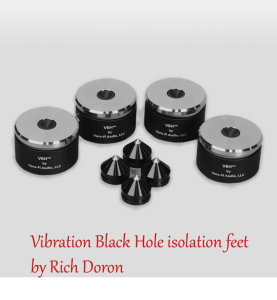
 If you read my previous review, you would have seen that I reviewed Vera-Fi Audio’s Mainstream and Snub-Way. As I’m still new to the world of HiFi audio, I’m trying to immerse myself in the many products available to enhance the sound at any stage of the listening experience. As many of you can relate, the Hi-Fi world can be a costly hobby. High price tags and bold claims can often leave audiophiles with empty wallets and empty promises. Fortunately for me, through reading these pages, I discovered Vera-Fi Audio. Vera-Fi Audio, from my experience, makes and sells modestly priced products that deliver exceptional results. Their core products, The Mainstream and Snub-Way, have provided my system with cleaner sound quality, lowered noise floor, and enhanced details. Diving into Vera-Fi Audio’s catalog, I reached out to the team to see if there were any other products I could test. Mark Schfiter at Vera-Fi Audio sent me a package of the Vibration Black Hole (VBH) isolation feet.
If you read my previous review, you would have seen that I reviewed Vera-Fi Audio’s Mainstream and Snub-Way. As I’m still new to the world of HiFi audio, I’m trying to immerse myself in the many products available to enhance the sound at any stage of the listening experience. As many of you can relate, the Hi-Fi world can be a costly hobby. High price tags and bold claims can often leave audiophiles with empty wallets and empty promises. Fortunately for me, through reading these pages, I discovered Vera-Fi Audio. Vera-Fi Audio, from my experience, makes and sells modestly priced products that deliver exceptional results. Their core products, The Mainstream and Snub-Way, have provided my system with cleaner sound quality, lowered noise floor, and enhanced details. Diving into Vera-Fi Audio’s catalog, I reached out to the team to see if there were any other products I could test. Mark Schfiter at Vera-Fi Audio sent me a package of the Vibration Black Hole (VBH) isolation feet.
So far in my journey, I have not explored vibration isolation much. I have spent some time researching vibration isolation. I’ve learned about the importance of minimizing vibrations in my system’s components. Up until this point, I have not used any vibration isolation. My components sit on a wooden coffee table, and my Lore Reference speakers have stock footers on them. Browsing the internet, I found component racks that cost a month’s salary and speaker footers that cost just as much as the speakers themselves. Deterred by the high price tags, I decided to hold off on vibration isolation for now. Well, that changed when I received the VBH isolation feet.
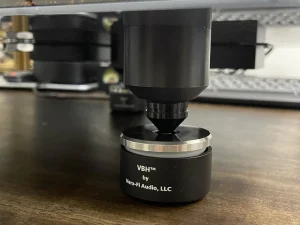
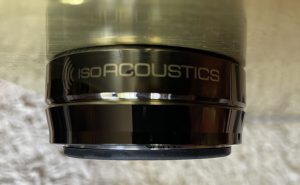
Let’s talk about Vera-Fi Audio’s Vibration Black Holes. The VBHs are modest in appearance, about 3 inches in diameter, and hefty in weight. Each VBH can support up to 30 pounds, resulting in a combined 120-pound weight limit when using all four. The VBHs utilize a multi-stage process of different materials to eliminate mechanical vibrations. Each foot is made of nylon, stainless steel, viscous polymer, and silicone rubber. The stainless steel platform on which a component sits is positioned on a viscous polymer material, described by Vera-Fi Audio as constrained viscous layer damping. You can see it in action when you press down on the stainless steel platform; it will move ever so slightly. The viscous layer features an external silicone O-ring to prevent bottoming out under heavy loads. The VBHs come with spikes and double-sided adhesive to place on your component. Installing the spikes can be tricky. However, Vera-Fi Audio has now developed small devices to assist with installing the spikes. They also have an installation video on their website that you can watch for more help.
My Experience
 When I received the VBHs, I was skeptical about them and thought to myself, “How am I supposed to review some component feet?” With some skepticism, I installed them under my Stein Music Stateline 2 Integrated. I installed them under the Stein first because it’s the only component I have that would benefit the most from this experiment. You can certainly install them under any component or speakers. I only had one set, so I wanted the amp to be most beneficial. In my initial test, I did not use the spikes; I positioned the feet underneath the amp and carefully placed the amp on top of them. After making some minor placement adjustments to ensure everything was aligned, I sat back and hit play. My skepticism was quickly dismissed after a few songs. I began to hear changes in my overall listening experience. Something I like about testing a product like this is that changes do not require any burn-in time or warm-up.
When I received the VBHs, I was skeptical about them and thought to myself, “How am I supposed to review some component feet?” With some skepticism, I installed them under my Stein Music Stateline 2 Integrated. I installed them under the Stein first because it’s the only component I have that would benefit the most from this experiment. You can certainly install them under any component or speakers. I only had one set, so I wanted the amp to be most beneficial. In my initial test, I did not use the spikes; I positioned the feet underneath the amp and carefully placed the amp on top of them. After making some minor placement adjustments to ensure everything was aligned, I sat back and hit play. My skepticism was quickly dismissed after a few songs. I began to hear changes in my overall listening experience. Something I like about testing a product like this is that changes do not require any burn-in time or warm-up.
One of the noticeable changes was in the bass and the low end of my sound. The bass was more prominent. I also noticed it was tighter and punchier. It started to give me that resounding thud that you can feel in your bones. It was not overpowering; the VBHs helped my system dig a little deeper to find those deep bass notes in songs. For example, in Lady Blackbird’s song “Fix It,” the plucking of the upright bass is more pronounced. I can hear a warmer, rounder, silkier sound to the bass. Another song that demonstrates the capabilities of the VBHs is Rising Appalachia’s “I Believe In Being Ready.” For a folk song, the piece features a prominent bass drum throughout. Recordings like this can be a challenging song because the bass is so prominent that it can drown out the vocals. However, the VBHs were able to enhance the prominence of the bass while maintaining the focus and clarity of the vocals. I noticed that I could hear the actual drumming, not just an overwhelming deep bass; you could almost pick out the style of mallet they used.
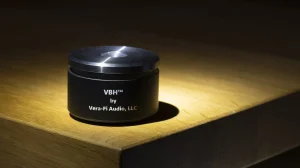

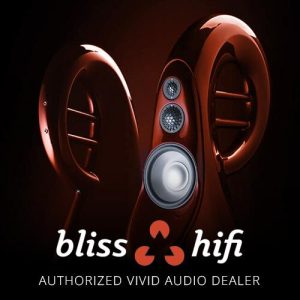 The warmer, rounder, and more prominent bass also opened up my system to a larger soundstage. My soundstage has been quite spacious; I have a wide separation between my speakers (10 feet), and I am a nearfield listener. After installing the VBH, I noticed an extension in the soundstage. The sound extended laterally beyond the loudspeakers. Additionally, the VBH added a level of quietness to my system. It’s similar to placing a nice cushion of air around the sound, just a nice isolated feel to the music. I did another round of testing using the spikes. The benefits that I heard in my initial test increased slightly after installing the spikes. Overall, the VBH has enhanced my system’s performance with lower-end notes, a wider soundstage, and a more focused and stable presentation.
The warmer, rounder, and more prominent bass also opened up my system to a larger soundstage. My soundstage has been quite spacious; I have a wide separation between my speakers (10 feet), and I am a nearfield listener. After installing the VBH, I noticed an extension in the soundstage. The sound extended laterally beyond the loudspeakers. Additionally, the VBH added a level of quietness to my system. It’s similar to placing a nice cushion of air around the sound, just a nice isolated feel to the music. I did another round of testing using the spikes. The benefits that I heard in my initial test increased slightly after installing the spikes. Overall, the VBH has enhanced my system’s performance with lower-end notes, a wider soundstage, and a more focused and stable presentation.
My Conclusion:
After having the opportunity to test the VBH, I am beginning to understand the importance of component isolation. There may be some truth to eliminating vibrations from my components after all. Dealing with sound, it’s all vibrations flowing through the air. I describe it as similar to image stabilization on a camera. No matter how still my hands may be, there will still be small vibrations when I hold my camera. The image stabilization corrects vibrations, ensuring the image remains clear. This is what I am experiencing with the VBH. The VBH provides stabilization by externally isolating my components. Stabilizing the sound enables it to perform sonically better.
Most importantly, what I like about the VBH is the price point; at $199 for a set of 4, it’s a minimal investment to improve your system. I have seen plenty of other isolation feet out there that cost $199 per foot. Vera-Fi Audio also has a 30-day money-back guarantee if you are not completely satisfied. Mark Schifter and his team at Vera-Fi are available to answer any questions you may have. Go out and try the VBH for yourself; you might be surprised by the results.


Specifications:
Price: $199.00 per set (4)
Website: www.verafiaudio.com
Stereo Times Masthead
Publisher/Founder
Clement Perry
Editor
Dave Thomas
Senior Editors
Frank Alles, Mike Girardi, Russell Lichter, Terry London, Moreno Mitchell, Paul Szabady, Bill Wells, Mike Wright, and Stephen Yan,
Current Contributors
David Abramson, Tim Barrall, Dave Allison, Ron Cook, Lewis Dardick, John Hoffman, Dan Secula, Don Shaulis, Greg Simmons, Eric Teh, Greg Voth, Richard Willie, Ed Van Winkle, Rob Dockery, Richard Doron, and Daveed Turek
Site Management Clement Perry
Ad Designer: Martin Perry


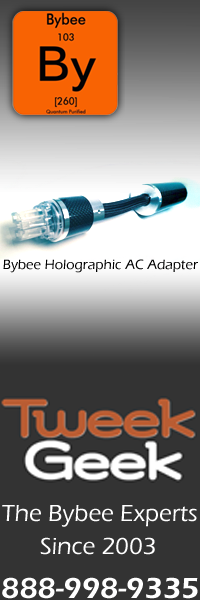
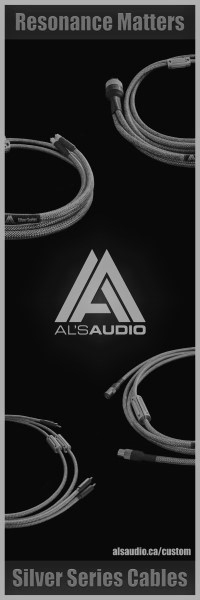

Be the first to comment on: Vera-Fi Audio-Vibration Black Hole by Rich Doron